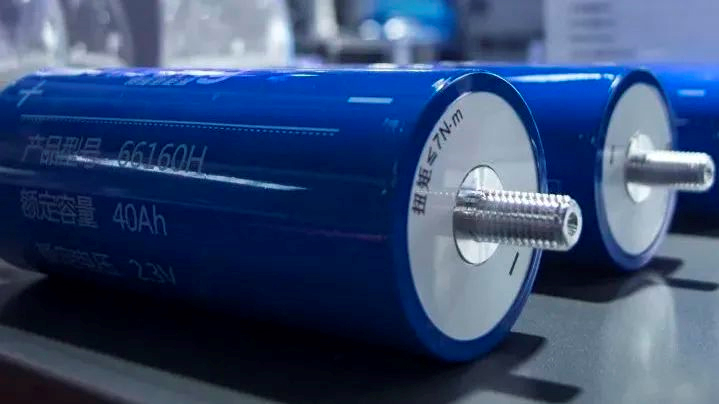What are the electrolytes in different types of batteries?
The electrolyte acts as a catalyst to make the battery conduct electricity by facilitating the movement of ions from the cathode to the anode during charging and in reverse during discharge. Ions are charged atoms that lose or gain electrons, and a battery's electrolyte consists of soluble salts, acids, or other bases in liquid, gelled, and dried forms. Electrolytes are also derived from polymers such as those used in solid-state batteries, solid-state ceramics, and molten salts such as sodium-sulfur batteries.

Lead-acid battery
Lead-acid batteries use sulfuric acid as an electrolyte. When charging, the acid becomes denser as lead oxide (PbO2) forms on the positive plate, and then becomes almost water upon full discharge. Lead-acid batteries are available in overflow and sealed forms, also known as valve-controlled lead-acid (VRLA) or maintenance-free.
Sulfuric acid is colorless, slightly yellowish-green, soluble in water, and highly corrosive. Anodic corrosion or water entering the battery pack may rust, resulting in a yellowish color.
Lead-acid batteries have different specific gravity (SG). Deep cycle batteries use dense electrolytes with SG up to 1.330 to achieve high specific energy, with an average SG of about 1.265 for entry batteries and a lower SG of about 1.225 for stationary batteries to moderate corrosion and extend service life.
Sulfuric acid has a wide range of applications and is also found in drain cleaners and various cleaners. It also provides services in mineral processing, mineral processing, fertilizer manufacturing, oil refining, wastewater treatment, and chemical synthesis.
Nickel cadmium (NiCd) batteries
The electrolyte of the nickel-cadmium battery is an alkaline electrolyte (potassium hydroxide). Most nickel-cadmium batteries are cylindrical in which several layers of positive and negative material are rolled into a jelly roll. Water-immersed nickel-cadmium batteries are used as Marine batteries in commercial aircraft, as well as in UPS systems operating in hot and cold climates that require frequent cycling. Nickel-cadmium is more expensive than lead acid, but it lasts longer.
Nickel-metal Hydride battery (NiMH)
Nickel-metal hydride uses the same or similar electrolyte as nickel-cadmium, usually potassium hydroxide. Nickel-metal hydride electrodes are unique, consisting of nickel, cobalt, manganese, aluminum, and rare earth metals, which are also used in lithium ions. Nimh is available only in sealed versions.
Potassium hydroxide is an inorganic compound, the general formula is KOH, commonly known as caustic potassium. Electrolytes are colorless and have many applications in industry, such as the ingredients in most soft and liquid soaps.
Lithium-ion (Li-ion) battery
Lithium-ion batteries use liquid, gel, or dried polymer electrolytes. The liquid form is the flammable organic form, rather than the aqueous form, and is a solution of lithium salt with an organic solvent similar to ethyl carbonate. Mixing the solution with various carbonates provides higher conductivity and extends the temperature range. Other salts can be added to reduce venting and improve high-temperature cycling.
Lithium ions with gelled electrolytes receive many additives to increase conductivity, as do lithium polymer batteries. The true dry polymer only conducts electricity at high temperatures, and the battery is no longer in commercial use. Additives are also added to achieve longevity and unique properties. Recipes are classified, and each manufacturer has its own secret recipe.
Electrolytes should be stable, but this is not the case with lithium ions. The passivation film forms on the anode and is called the solid electrolyte interface (SEI). This layer separates the anode from the cathode, but allows ions to pass through like a diaphragm. In essence, an SEI layer must be formed for the battery to function properly. Thin films stabilize the system and extend the life of lithium-ion batteries, but this results in reduced capacity. Electrolyte oxidation also occurs on the cathode, permanently reducing capacity.

To prevent the film from becoming too limiting, additives are mixed in the electrolyte consumed during the formation of the SEI layer. It is difficult or even impossible to trace their presence when testing is being evaluated. This makes proprietary additives a trade secret, both in terms of their composition and how much they are used.
A well-known additive is vinyl carbonate (VC). This chemical can improve the cycle life of lithium ions, especially at higher temperatures, and maintain lower internal resistance with use and aging. VC also maintains a stable SEI film on the anode, and electrolytic liquid oxygenation has no adverse side effects on the cathode (Aurbach et al.). It is said that the knowledge and selection of additives in the academic and research community lags behind that of battery manufacturers, so there is a great secret.
For most commercial lithium-ion batteries, the SEI layer breaks down at battery temperatures of 75-90 °C (167-194 °F). The type and state of charge (SoC) of the battery will affect breakdown at high temperatures. If not cooled properly, self-heating behavior can occur, resulting in thermal runaway. Laboratory tests on 18,650 batteries have shown that such thermal events can take up to two days to develop.
The flammability of lithium-ion electrolytes is a further concern, and experiments have been conducted to produce electrolytes with non-combustible or reduced flammability through additives or the development of non-organic ionic liquids, and studies have also been conducted to operate lithium-ion batteries at low temperatures.

